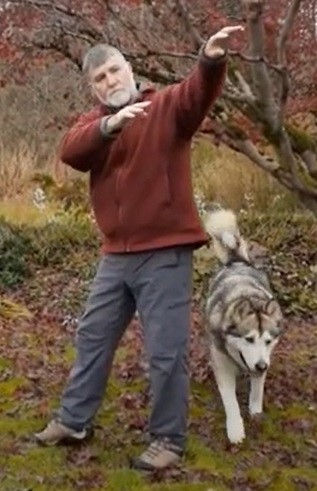Qi Gong Basics for Beginners: An Introduction with Robert Bates
- Matt Van Dyke AEMP MQP

- Apr 22
- 2 min read

Hi, I’m Robert Bates. I teach Qi Gong and am licensed as a chiropractor in Bellingham, Washington. After years of college, exercise, martial arts, and life’s stresses, I found myself completely drained. In 1994 I discovered Qi Gong—a practice that, year after year, has given me more energy, better health, and greater joy. Over the decades, I’ve refined a simple, step‑by‑step approach that helps students learn quickly and experience those same benefits.
What Is Qi Gong?
Qi Gong (pronounced “chee‑gong”) literally means energy cultivation.
Qi is the life‑force that makes you feel vibrant and healthy.
Gong refers to skill or practice.
Unlike more complex arts such as Tai Chi, Qi Gong offers gentle, accessible, whole‑body movements that integrate breath, motion, and a calm mind. It’s not:
Isometrics
Static stretching
Western cardiovascular exercise
Instead, Qi Gong is relaxed, conscious movement designed to harmonize the body, breath, and mind.
Why Practice Qi Gong?
Healing & Restoration - Soothes old injuries and rebuilds weak areas.
Energy Boost - Leaves you feeling more energized throughout your day.
Mental Clarity - Clears the mind and reduces stress.
Longevity - Many long‑term practitioners enjoy happier, healthier, and longer lives.
Cost Savings - Stronger, more stable bodies mean fewer doctor visits and accidents.
And that’s just the beginning—there are many more benefits to discover as you deepen your practice.
The Five‑Flow Set Warm‑Up Overview
The following video demonstrates the warm‑up flow of the Five‑Flow Qi Gong set, a beginner‑friendly sequence of twelve exercises divided into five parts:
Warming Up (e.g., shaking the body, turning the waist)
Cleansing (releasing tension and energetic blockages)
Charging (drawing fresh Qi into the body)
Balancing (harmonizing left/right, up/down)
Centering (grounding and integrating the flow)
You can use these warm‑up exercises before any Qi Gong or Tai Chi practice—including Dayan Wild Goose Qi Gong, which I teach alongside Matt Van Dyke here in Bellingham.
Getting Started: Key Principles & Posture
Practice Daily - Consistency builds skill and energy.
Never Force - Find variations that feel good; avoid pain.
Refine as You Go - Adapt each movement as you learn.
Basic Posture
Feet shoulder‑width apart
Knees slightly bent (not locked)
Toes pointing forward
Shoulders aligned over hips
Spine neutral, breathing continuously, and full of ease
With these foundations in place, you’re ready to explore the warm‑up flow.
Watch the full introduction and warm‑up demonstration here:


Comments